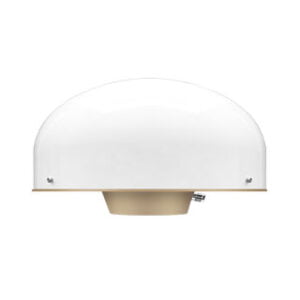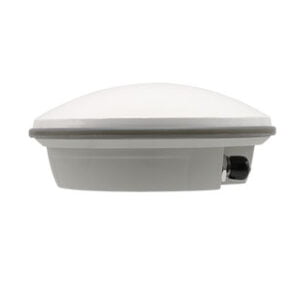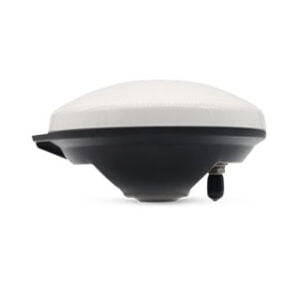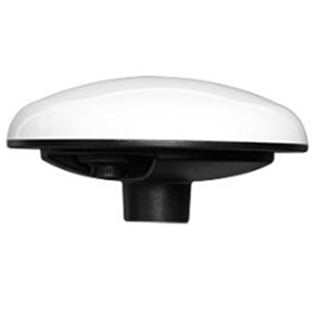Global Navigation Satellite Systems (GNSS) play a pivotal role in providing accurate positioning and navigation services across various industries. Recent years have witnessed a trend in GNSS systems towards integrating various technologies such as sensor fusion, PPP, RTK, etc., leading to enhanced productivity and the development of devices that exhibit growing accuracy and versatility. Nonetheless, this integration introduces additional complexities and poses challenges for antenna design. The efficiency of GNSS systems relies on the selection of appropriate components, with the GNSS antenna being a critical element in the reception of satellite signals. Choosing the optimal GNSS antenna for your device can be a challenging task, given the plethora of options available. This article aims to provide a professional and comprehensive guide on how to select the right GNSS antenna for specific applications.
1.Understand Application Requirements:
The first step in selecting a GNSS antenna is to clearly define the requirements of the application. Different applications demand varying levels of accuracy, signal reliability, and environmental resilience. Whether it's precision agriculture, surveying, or autonomous vehicles, understanding the specific needs will guide the selection process.
2.Compatibility with GNSS Constellationand GNSS Receivers
Consider the GNSS constellations that the antenna should support. While many antennas are designed for multi-constellation reception, it's essential to verify compatibility to ensure optimal performance across various systems. For example, the Multi-Frequency GNSS Beacon Antenna offers extensive support for multiple GNSS systems, including GPS, GLONASS, Galileo, BeiDou, and the L-Band correction service. In addition, ensure compatibility between the selected GNSS antenna and the GNSS receiver with which it will be used. As the antenna functions as both a spatial and frequency filter, its impact on the GNSS receiver's performance is substantial. Choose an antenna that encompasses the signal frequencies transmitted by the constellation. The antenna also needs to align with the bandwidth supported by your receiver. Verify connector types, cable lengths, and impedance matching to guarantee seamless integration and optimal performance.
3.Antenna Type:
Choose the appropriate antenna type based on the application and usage scenario. The mounting and form factor of the antenna are crucial for integration into the overall system. Determine whether a surface-mount or through-hole mount is suitable, and consider size constraints if applicable. Common types include patch antennas, helical antennas, and choke-ring antennas. Patch antennas, for instance, are popular for their compact size and reliability in clear-sky conditions, while helical antennas may offer better performance in challenging environments.
4.Frequency Bands:
GNSS signals operate in specific frequency bands, and the antenna must be designed to operate within these bands. The primary GNSS frequency bands include B1, B2, B3 for Beidou, G1, G2, G3 for GLONSS, L1, L2, L5 for GPS, E1, E5, E6 for Galileo, and corresponding bands for other constellations. Ensure that the selected antenna covers the relevant frequency range for the intended GNSS system.
5.Environmental Considerations:
Evaluate the environmental conditions in which the GNSS antenna will operate. Factors such as temperature extremes, exposure to moisture, and physical stress should influence the selection. In this case, selecting a ruggedized and weather-resistant antenna such as Universal Measuring Antenna is necessary. It is designed with brand new structure, enabling easy and flexible installations (magnetic mount, helical mount and pole mount) for many high-precision applications. The ability of receiving low elevation signals with high gain and wide beam width allows it to track satellites under challenging conditions.
6.Signal Multipath and Interference Mitigation:
Consider features that help mitigate signal multipath and interference. Advanced antennas may incorporate technologies like anti-jamming capabilities or ground plane enhancements to minimize the impact of reflective surfaces and external signals. Choke ring antennas offer high multipath rejection due to their unique concentric ring design that block out multipath signal reflections to the antenna element. And ER-MA-08 GNSS Choke Antenna is specifically designed for applications require absolute positioning accuracy and multi-constellation support. Tracking in challenging environments, it boasts high phase center stability and long lasting durability.
7.Gain and Radiation Pattern:
The radiation pattern or antenna pattern is the graphical representation of the radiation properties of the antenna as a function of space. Or generally speaking, it influences coverage. And the gain of a GNSS antenna is a crucial performance indicator, as it must meet a minimum requirement to attain a sufficient C/N0 (carrier-to-power-noise ratio) for tracking GNSS satellites. The antenna's gain directly influences the overall C/N0 of navigation GNSS receivers, thereby playing a significant role in defining the system's tracking capability. What's more, the gain indicates its ability to receive weak signals. Strike a balance between gain and radiation pattern based on the application's coverage requirements and the need for signal sensitivity.
8.Cost Considerations:
Antennas and receivers boasting superior accuracy and sensitivity surely bring precise results. While quality is paramount, cost considerations are also important. Consequently, it is crucial to carefully assess the cost-benefit ratio to ascertain if the investment aligns with the needs of your application. The ultimate decision hinges on the specific requirements of your commercial application and the objectives you aim to accomplish with your device. You need to evaluate the budget constraints and seek antennas that provide the required features and performance within the specified financial limits.
In conclusion, selecting the right GNSS antenna is a critical decision that directly impacts the accuracy and reliability of satellite positioning systems. By carefully assessing application requirements, considering GNSS compatibility, evaluating environmental factors, and weighing other crucial parameters, one can make an informed decision that ensures optimal performance in diverse scenarios. Always consult with us to address specific needs and challenges associated with your GNSS application.
I will appreciate it if you find this article helps you a lot on selecting the right antenna. Click the link below if you want to learn more about GNSS products. Please feel free to contact info@ericcointernational.com
More Technical Questions
1. Some Questions about GNSS Antenna
2. The Difference and Connection between GPS and GNSS
3. The Working Principle of GNSS
Products in Article







